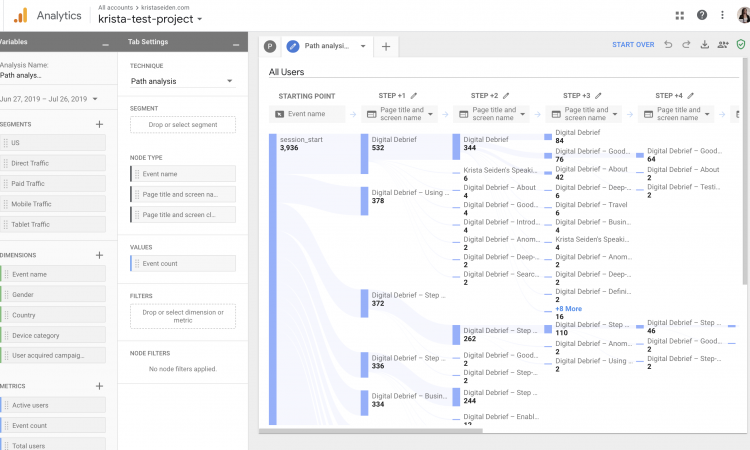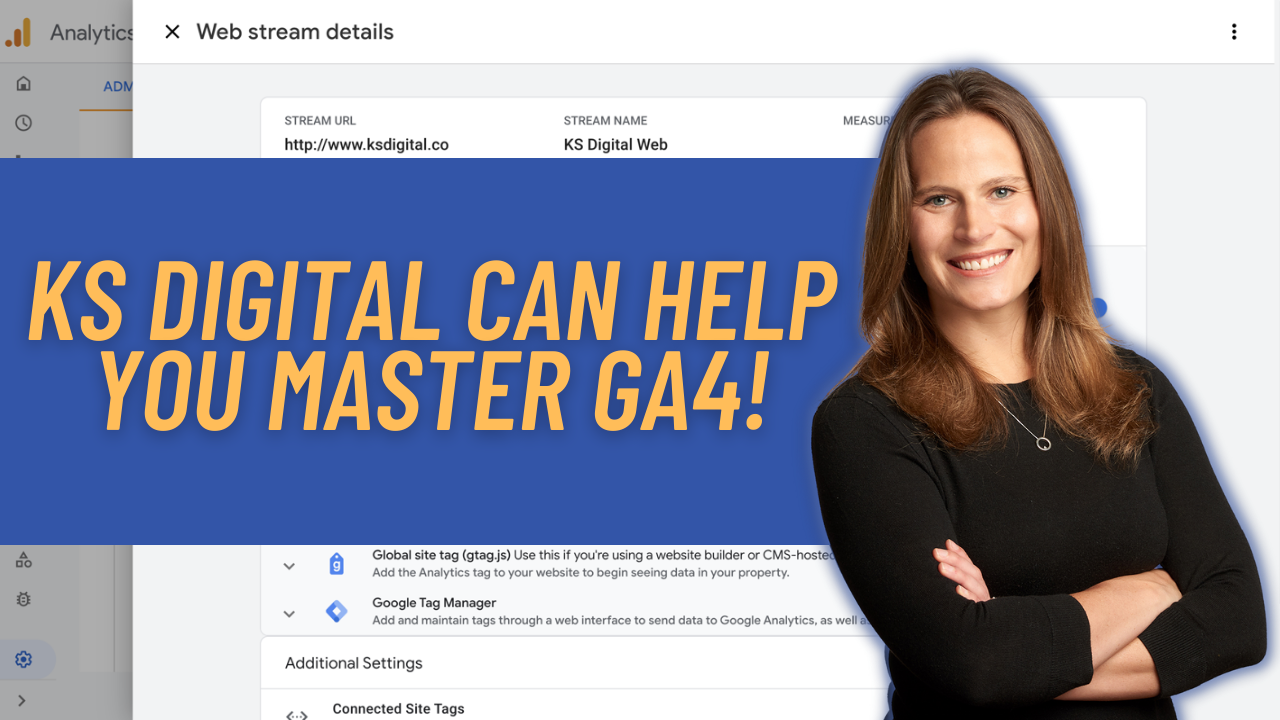The wait is over! Ecommerce reporting is finally here for App+Web properties in Google Analytics! While the Ecommerce schema for App+Web was released back in March, reporting has only just now been released, so if you’ve been sending Ecomm events to A+W over the past several months, you’ll know that until now, the only way to see data on these events was either 1) raw event count in the Events table, or 2) in BigQuery. Full Ecommerce reporting, pre-aggregated into reports on things like Ecommerce revenue, Purchases, Promotions, Items, etc, similar to the out of the box reporting in Universal Analytics is now available for a more in-depth (and in-UI) understanding of how your Ecommerce flows are working on your site. *Please note that access to this new reporting is
Continue reading...
Firebase
In this Step by Step guide, I’ll take you through the three steps you’ll need to go through to set up a new GA4 Property in Google Analytics. Note, this is an update to an earlier blog post covering the same topic, however, in this new post, the initial steps of creating a property can now be done in the Google Analytics interface rather than in the Firebase console. Yay! Step 1: Create a new Account in Google Analytics I will actually start from the Account creation screen here, because I am going to create a whole new account for a new website I’m working on for KS Digital. So step 1 is to create a new account. If you don’t need to separate out the account due to different
Continue reading...
Now that we’ve had data coming in to our new App + Web property for some time, I’d like to deep-dive on a topic near and dear to any analyst’s heart: Reporting. Being able to map what we see in an A+W property back to something we know in Universal Google Analytics is important to help us as analysts make (or rather, smooth) the mental transition. To do that, I’ll look at a few common reports from Universal Google Analytics and A+W for the same time period to compare and contrast. Keep in mind, they are collecting data in different ways, so it’s reasonable to see a difference in numbers for things like Users and Sessions. Before we begin, I want to take a moment to define some of the
Continue reading...
As a follow up to my Step by Step post on setting up a GA4 property, in this post, I’ll show you how to setup your first tag for GA4 to start collecting data via Google Tag Manager. My friend and GTM expert Simo Ahava has also posted about this in his GA4 setup guide here, so be sure to check out that post as well. Step 1: Select “Google Analytics: GA4 Configuration” from the new tag configuration pane in Google Tag Manager The first thing to do once you’ve opened Google Tag Manager is to select “New Tag” and choose from a couple of new tag types you’ll now notice in the slide out window. In this case, we’ll select the “Google Analytics: GA4 Configuration” tag. The “Google Analytics:
Continue reading...
In this Step by Step guide, I’ll take you through the three steps you’ll need to go through to set up a new App + Web Property in Google Analytics. If you haven’t checked out my first post which goes into a detailed overview of this new property, I’d suggest stopping there first before continuing on with this article. First things first, for now (at least while it’s still in Beta), you’ll first need to create a Firebase project, and link to Google Analytics in order to get the new property to show up in Google Analytics. Step 1: Create a Firebase Project Start by going to console.firebase.com to either log into your Firebase account, or to get started creating your first project. To create a new project, Click ‘Create a
Continue reading...
One of the cool new reports coming over from Google Analytics for Firebase (GA4F) to the new App + Web Property in Google Analytics is Streamview. This is essentially Realtime 2.0 (if you’re familiar with the Realtime reports in Google Analytics). What’s the difference? Realtime 1.0 (aka in Universal Analytics) is the original Realtime report in Google Analytics. You’ll recognize the iconic (though arguably not super beautiful looking) design below. It tells you how many people are on your site right now, what the referral source is, where they are geographically, what events are happening on site, etc. It doesn’t allow you to segment or dive deeper into that data though. Streamview (aka Realtime 2.0) first made its appearance in GA4F, along with its counterpart, Debugview (a super cool tool
Continue reading...
As I mentioned in my post from yesterday talking about the new App + Website properties in Google Analytics, the Analysis section of Google Analytics has gotten even better! Why? Because Pathing is now available in Analysis! I know what you’re thinking… “but Krista, GA has had Behavior Flow and User Flow reports for forever, and they are terrible.” And yes, you’d be correct. The previous versions (still available in GA today) of flow reports never quite hit the mark. It’s no secret, I happily shared my opinions of their shortcomings on many stages while representing Google as the evangelist for Google Analytics. For my last 2 years at Google, I took on Product Management for parts of Google Analytics, including building out a new version of Funnels (similar to
Continue reading...
The wait is over, the new App + Web property feature has officially launched to open public beta! Do keep in mind this is still a Beta – the product is early, doesn’t yet have all the features we all want, and is changing regularly. And, the team wants your feedback! I’m super excited for where this new Google Analytics release is headed, and know there is a lot more to come to continue to improve what’s there. What does this mean? You can now create a new property type in Google Analytics that will allow you to combine App + Web data in the same property. This new type of measurement uses the same data schema as Google Analytics for Firebase (GA4F), and works hand in hand with GA4F,
Continue reading...
Recently, I posted an Overview of Google Analytics for Firebase. If you haven’t read that article yet, I’d suggest starting there. Next, I want to recap some of the exciting new features announced this year at Google I/O (May, 2018). The first, and this is a big one, is ‘Project-level Reporting’. What does that mean? Previously, In Google Analytics for Firebase, you would have individual Apps within Projects. Each app would have it’s own reporting section (you would toggle between iOS and Android via a dropdown on the top left to choose which version of your app you wanted to analyze). What does this mean to you? Now, instead of having to toggle between apps to analyze your data separately, you can analyze it together. Of course, you can still
Continue reading...

